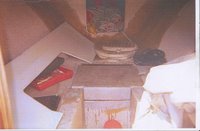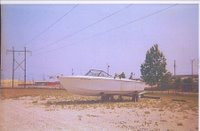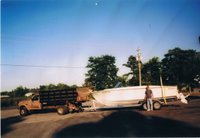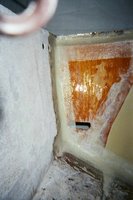


After I completed the transom I took some 404 filler and epoxy and put a fillet on all the corners. You need to do this so when you lay the new glass it lays smoothly in the corners with no sharp angles. If you have sharp right angles you can get a void in your glass lay up. After the epoxy had cured I took some six inch bi-axle glass tape with stitch mat back and laid it up around the transom. I did this to tie in the transom with the sides and the bottom of the hull. Next I will glass in the whole transom with Fiberglas and this will complete the transom for now.








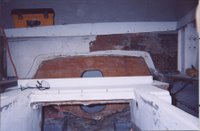










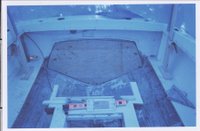












 In these pictures I have the boat in its new home. The tear down process has begun. I started with the cabin door and then the windshied frame.
In these pictures I have the boat in its new home. The tear down process has begun. I started with the cabin door and then the windshied frame.






